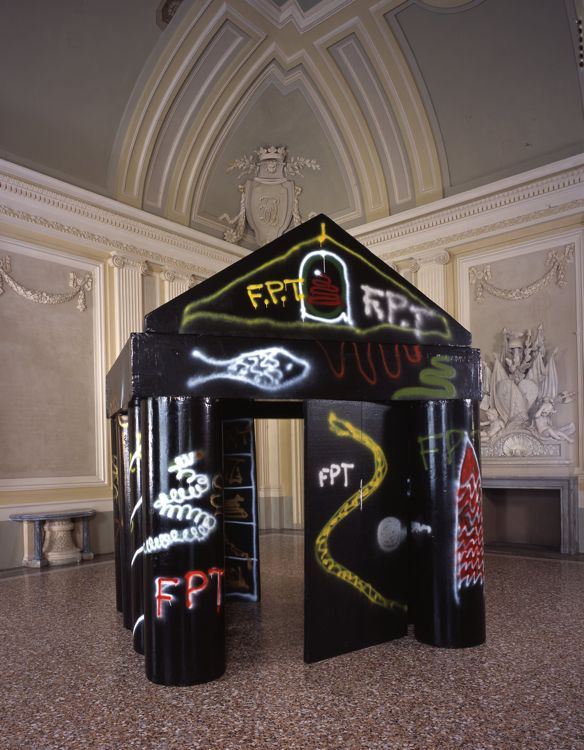Frank O. Gehry
The architecture of Frank O. Gehry is made up of an original language with a vocabulary that encompasses the contemplation of movement, transformation, and chaos. The dynamism that characterizes his projects has been compared to the condition of the city of Los Angeles, whose seismic capability continually introduces the possibility of radical changes into the urban fabric. For Gehry, architecture, like an earthquake, “flows and spreads in waves and upsets, strikes at every latitude, produces breaks in the depth of buildings and spaces, creates deformations and shifts.” Known to the art public above all for the design of the Guggenheim Museum in Bilbao, Spain, Gehry has been stimulated throughout his career by the language and working methods of contemporary artists, in particular, Claes Oldenburg and Coosje van Bruggen, Donald Judd, and Richard Serra. His attraction to transitoriness, traditionally antithetical to architectural language, is the result of his familiarity with performance art, in which Oldenburg had been a leading figure. In early 1984 Gehry began collaborating with the team of Claes Oldenburg and Coosje van Bruggen on a project conceived as a combination of architecture and theater, culminating in the performance Il Corso del Coltello/The Course of the Knife, which took place in Venice in 1985. In the performance the architect wore the clothes of Frankie P. Toronto (“P” for Palladio), a farcical alter ego whose monologues nevertheless reflect his ideas about architecture.
Temple Shack, 1985, was created according to Gehry’s design on the occasion of the performance. Covered with graffiti and composed from a tympanum and columns, the basic elements of Greek architecture, the little temple is made up of independent parts, without permanent connections. During the course of the performance, Gehry emerged from the structure using a knife to make it fall. The knife, the element of both division and union for the entire performance, symbolizes the architect’s capacity to free himself from traditional iconography, literally reducing its components to nothing. The apparent simplicity of the performance gesture corresponds with the concept of disorder and Gehry’s opposition to the Postmodernism in favor at the time, typified by the use of architectural elements belonging to historical eras. The costume Gehry wore for the performance also contained playful references to the language of Postmodernism, while his headgear, in the shape of a fish, presented an important recurring iconographic element in his architecture.
For Gehry the fish is the symbol of perfection, an abstract ideal, but it is also related to a personal experience connected to his childhood. As a psychological archetype, it dates back to the days when his grandmother would buy a live carp every week and keep it in the bathtub until it was time to cook it to make gefilte fish, the traditional Jewish stuffed fish dish. Gehry has also explained his interest in the fish and its shape as a clear contrast to Postmodernism and as a critique of the anthropocentrism of classical architecture. Gehry initially introduced the fish in a series of lamps he designed. Since 1981 the form has appeared in his architecture, as both a sculptural and a functional element. The GFT Fish, 1985–86 is a project for a residence in the shape of a fish, a building-object that contains in itself the seeds of buildings yet to be designed. The project was commissioned for an exposition by the GFT textile group in Turin.
[MB]

